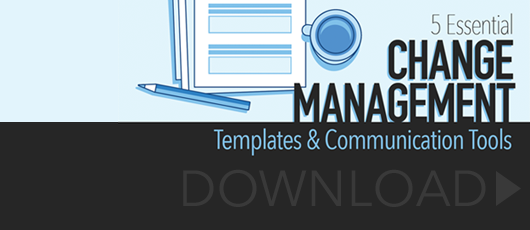Leadership Approaches for Communicating a Merger to Employees
 After a merger, HR leaders are often tasked with developing an internal communication strategy. To be successful, you need to help your leadership team understand the impact on employees during mergers and acquisitions.
After a merger, HR leaders are often tasked with developing an internal communication strategy. To be successful, you need to help your leadership team understand the impact on employees during mergers and acquisitions.
When executive teams fail to acknowledge change, it can be difficult for HR to align and engage employees. Executive teams who appear divided and unaligned foster unhealthy and disengaged cultures.
During a merger, employees can experience a range of emotions. But oftentimes, leaders focus on items like:
- Financial projections
- Org charts
- Contracts
The majority of mergers and acquisitions fail because leaders ignore the emotional needs of their employees. Business leaders need to focus on effective communication and improving the employee experience. After all, your m&a process will only go as far as your people will take it.
What leadership approaches will be effective in leading a merger
Here are some common emotions and leadership approaches to begin communicating a merger to employees.
Address anxiety.
The announcement of merging companies is usually kept private until the m&a deal is signed. This makes it challenging for employees to mentally prepare for change.
Sudden change disrupts employees from their norm and puts people on edge. This can create a flood of questions including:
- What information am I missing?
- What should I expect in the future?
- Who can I trust moving forward?
Employees crave stability. Change can breed gossip, uncertainty, fear, and disengagement.
Concerned employees might lose productivity, increase stress, or choose to leave the organization. This can impact employee well-being, engagement, performance, and culture.
The leadership approach: Communicate with employees.
When it comes to mergers and acquisitions, don’t communicate for the sake of communication. Think about your unique audience and how to address their needs. Ask yourself:
- Do we have a central FAQ document for managers?
- Do we have a timeline of milestones and updates?
- How should we communicate the purpose of this change?
- What is our key message?
Your internal communication plan should be multi-tiered and intentional. It should add clarity, not confusion. Think about what each audience needs to hear and how it would be best delivered. Leverage frequent communications and continuous listening strategy to address new questions or concerns.
Avoid selfishness.
A merger or acquisition can signal a need to refresh your resume. Voluntary turnover is common when individuals feel their future-fit in an organization uncertain.
In the interest of security, employees may focus on their own work with little regard for others. But depending on and supporting teammates impacts employee engagement.
When employees are focused on themselves, productivity comes to a halt. And egos can get in the way of onboarding new hires which can prevent successful and essential team dynamics.
The leadership approach: Build better relationships.
You can’t keep individuals from trying to gain the upper hand. You can fight selfishness with relationship- and team building.
Create opportunities for your team to collaborate as a team. Brainstorm team building activities outside of the office. The change of scenery can decrease anxiety and increase humility.
Consider an activity that requires problem-solving. Escape rooms or improv workshops help build a collaborative spirit. When employees understand their teammates are human they'll feel a stronger need for their support.
Understand grief.
Employees are sometimes asked to alter their routine during the acquisition process:
- Colleagues may leave
- Culture may dissolve
- Job roles may change overnight
Employees spend a significant amount of their lives at work. When employees part with meaningful aspects of their work, it’s easy to understand the impact on psychological health.
As a result, excitement about the future and long-term engagement can be difficult to maintain.
The leadership approach: Be human.
Be sensitive to the time it may take for employees to accept change post merger. Empathy for employee needs breeds the help you need to manage change. Staying human during these times could be the difference between failure and success.
Acknowledge employees’ feelings as some may feel a genuine sense of loss. Address how the merger will affect employees directly. Celebrate your accomplishments and history. Share past memories and allow employees to take part to say goodbye before moving on.
Acknowledge pride.
Outside of profit and market share, one desired outcome of a merger is to build a unified culture. But when one entity is more dominant, people may believe there are winners and losers. As a result, pride can surface among those who are a part of the acquiring company.
Pride from the “old regime” can create division and stifle learning opportunities. This can keep your culture from coming together. Individuals who stick to their "old ways" may hoard knowledge and become condescending toward other team members. This can stall or prolong essential job training and onboarding.
The leadership approach: Foster culture champions.
Empower your biggest advocates by encouraging them to become mentors to new employee groups. Make ambassadors out of those who hold valuable information and can help you grow the new brand.
This will help you create measurable touch points for employees to share their knowledge. It will also turn potential office bullies into leaders and change agents.
Build excitement.
Not all emotions around mergers or acquisitions are negative. Consider how you will manage the emotions of employees motivated by change.
Some employees may loathe, be hesitant, or downright resistant to the change. Others will become invested in the potential that lies ahead. At the same time, questions will surge and managers won't be able to fill all the gaps.
The leadership approach: Develop a communication team.
Mergers and acquisitions will continue to be key strategies for companies looking to grow market share. As you build your own communication plan, consider the power in numbers.
You need to inject accurate information throughout your workforce. Ask middle managers to nominate their employees to become ambassadors for change. Work by department or business unit to fill the gaps between employees, managers, and leadership. Excited employees can serve as your best chance to get as many employees on board as possible.
Want help communicating this big change? Download our free change management communication templates.







